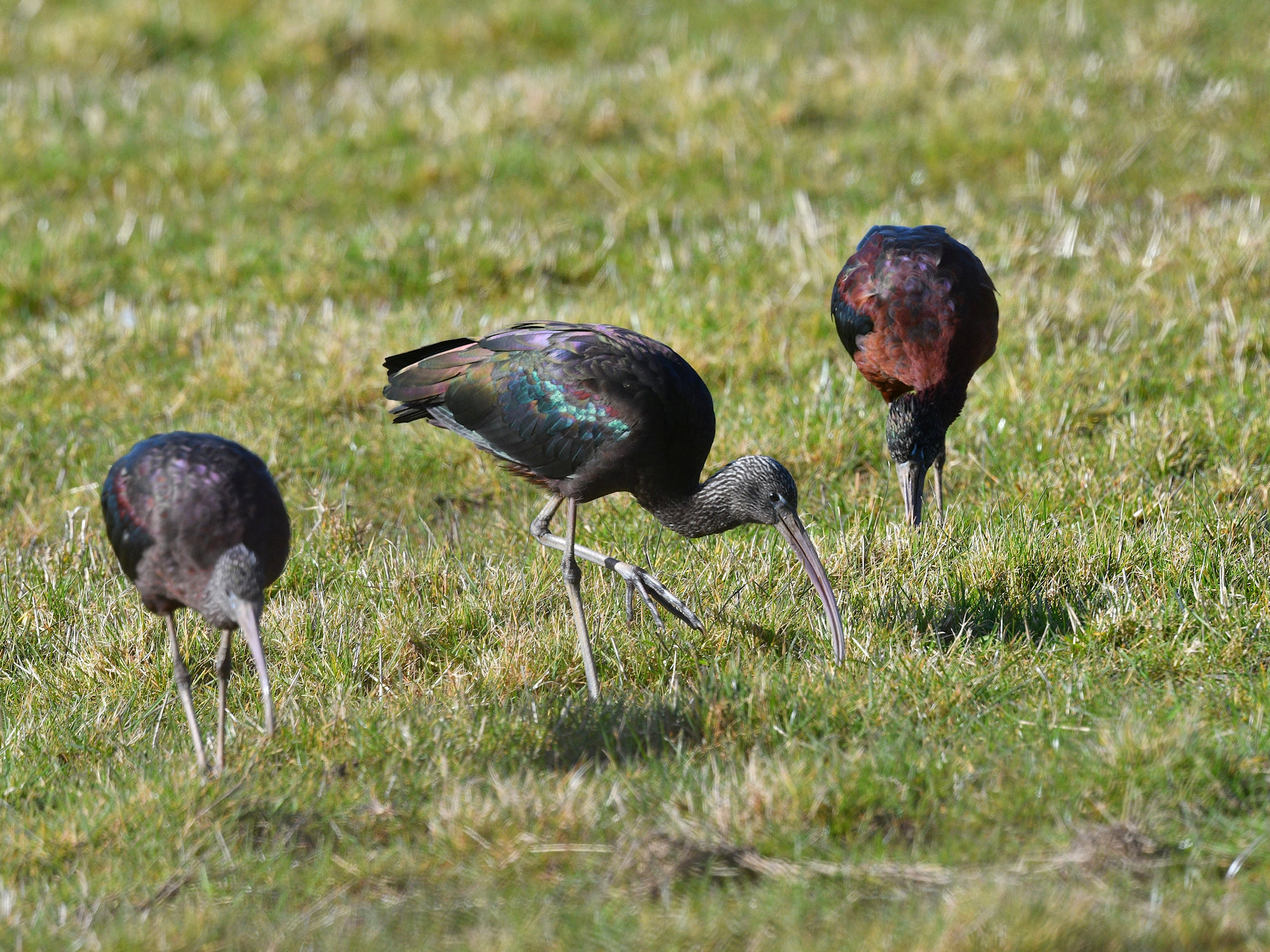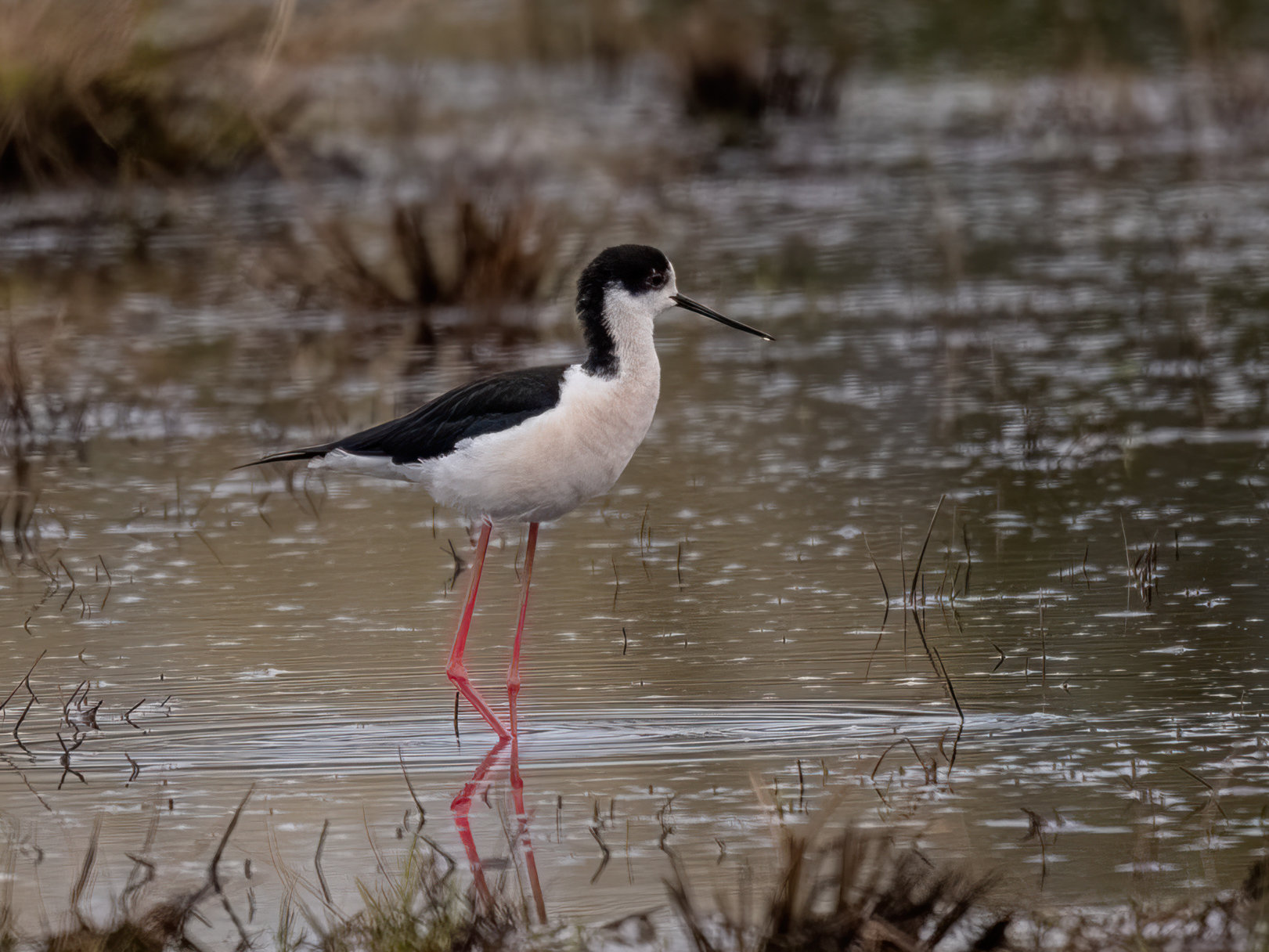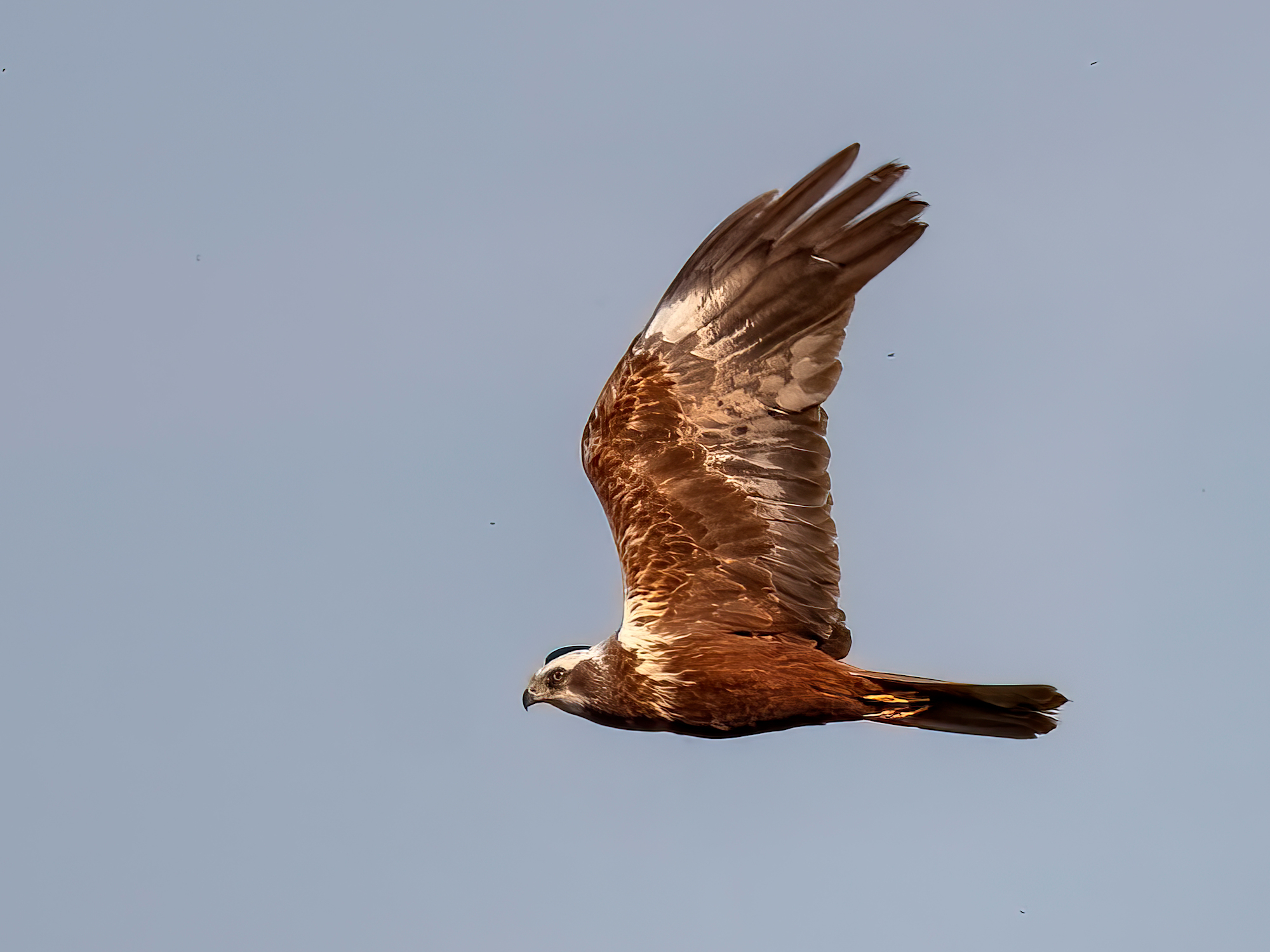Brading Marshes RSPB
Brading Marshes is a large area of marshland and meadow that has developed after the estuarine Brading Haven was reclaimed in the 19th century. Parts of the area are managed by the RSPB, but viewing is restricted to pre-existing footpaths around the perimeter. On the western side of the Marsh is a relatively new wetland, known as the New Bridge Pools, that is maturing well and attracting some interesting species. Further north-west is an area of trees and scrub that was once an extension of the Marsh but was drained during the nineties with the intention of developing a golf course. The golf course never materialised and the area has now reverted to scrubland.
The main marsh is most easily viewed from Laundry Lane (the old railway track between Brading and St Helens) and holds marsh harrier, Cetti's warbler, water rail, little egret and tree nesting cormorants. Bittern, hen harrier and short-eared owl are occasionally seen in winter.
Half way down Laundry Lane, there is a signposted footpath that heads west along an embankment, which leads to the recently created New Bridge Pools, where a variety of wildfowl and waders can be found including breeding lapwing in summer, wintering teal, shoveler, wigeon, snipe and black-tailed godwit, kingfisher in winter and passage waders such as little ringed plover, green, common and wood sandpiper, ruff, snipe, whimbrel and black-tailed godwit.
For an alternative view of the main marsh there is a path from the end of Quay Lane (Fatting Marsh) east to Centurion’s Copse giving good views both north-east and south-west. It’s worthwhile stopping at the bridge as in the winter various ducks feed in the area and in the summer there are Reed and Sedge Warbler, along with reed bunting.
Access, parking and amenities
Laundry Lane is the most popular path but has very limited parking. To park at Brading, turn off the A3055 at Brading High Street into Quay Lane (next to the church) and drive to the end of the lane but there is only enough space for a maximum of three cars. If full, you can park at Brading railway station or in the car park just north of Brading Church and walk to the reserve. Alternatively, parking can be found at the St Helens end of Laundry Lane by taking the B3330, Carpenters Road, and turning on to the rough track at the bottom of the hill into St Helens. Park on the side of the track where the Marsh is first visible. Please do not drive beyond this point.
What to look out for - Calendar
Spring (March - June)
Hobby, migrant waders including little ringed plover, whimbrel, common, green and wood sandpipers, greenshank, great crested and little grebe, garganey, cuckoo, sedge and reed warblers, redstarts, water pipit, whinchat, stonechat, goldcrest, firecrest and ring ouzels.
Autumn (July - mid November)
Passerine passage migrants in Autumn include various warblers, redstart, whinchat, yellow wagtail and lapwing. Osprey is regularly seen, sometimes staying for a few days. Peregrine and hobby are often seen during the Summer.
Winter (mid November - February)
Dark-bellied brent goose, Russian white-fronted and greylag goose, wigeon, gadwall, teal, pintail, shoveler, pochard, lapwing, curlew, hen harrier, merlin, peregrine, snipe. black-tailed godwit, short-eared owl, water pipit, redwing, fieldfare, goldcrest and firecrest.
Year round
Little and great white egret, grey heron, white-tailed eagle, marsh harrier, buzzard, sparrowhawk, kestrel, water rail, lapwing, kingfisher, Cetti’s warbler and finches including bullfinch.
Rarities
Rarities in the area have included european roller, red-footed falcon, rough-legged buzzard, black stork, squacco heron, purple heron, night heron, cattle egret, glossy ibis, spoonbill, green-winged teal, red-rumped swallow, alpine swift, crane, pectoral sandpiper, whiskered tern, bee-eater, great grey, lesser grey and woodchat shrike, penduline tit and snowy owl.
Images

Glossy ibis. © Andy Butler

Black-winged stilt. © Tracey Jolliffe

Marsh harrier. © Tracey Jolliffe
Useful links and further reading
View the current weather forecast for Brading Marshes
Download the Brading Marshes Trail Guide
